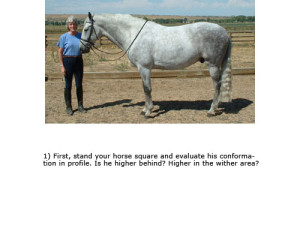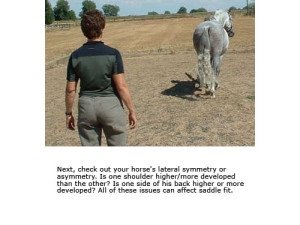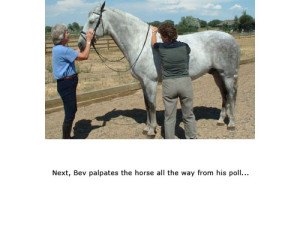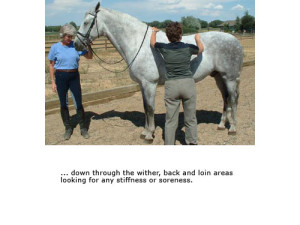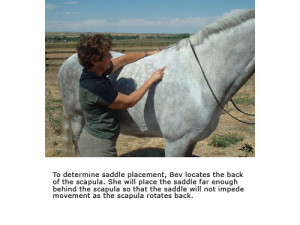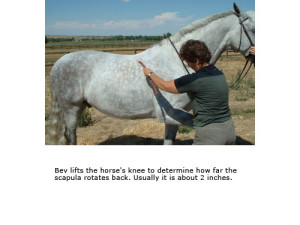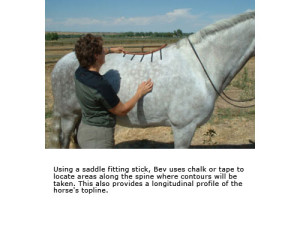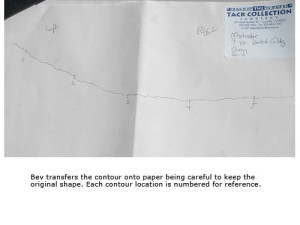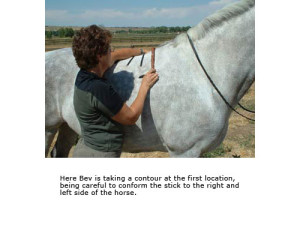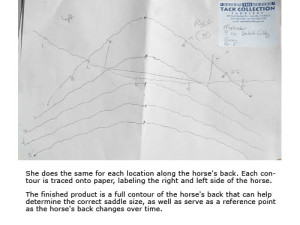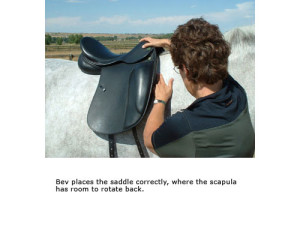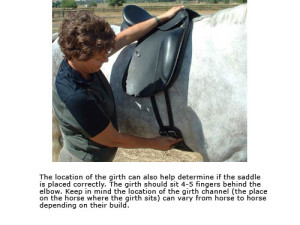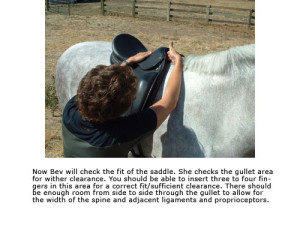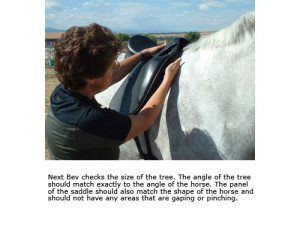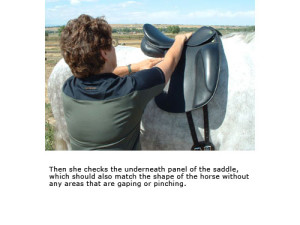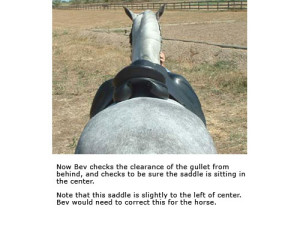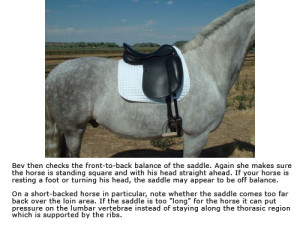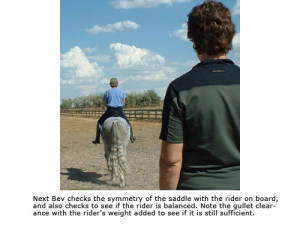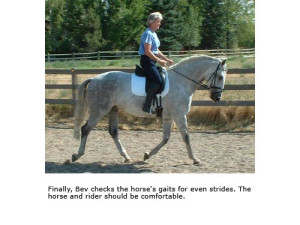At The Tack Collection, we know that a well-fitting saddle provides your horse with maximum comfort, while also providing you with stability and support—a combination that will make each riding discipline more enjoyable. Although we are retired from this service, the step by step description may be helpful.
Contact Us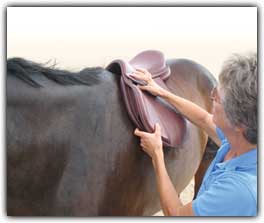
Beverly Harrison is recognized as a Qualified Saddle Fitter by The Society of Master Saddlers
(United Kingdom), Ltd. For over two decades, her specialty has been professionally fitting saddles.

Learn more about The Society of Master Saddlers (UK)
by visiting The Society of Master Saddlers (UK) website.
The Effects of a Properly Fitted Saddle
FOR THE HORSE –
A saddle should support the weight of the rider over a large surface area, protect the spine, and remain stable on the horse’s back during movement.
The fit and placement should be such that the horse is able to move as freely under saddle as he does at liberty.
FOR THE RIDER –
The design of the saddle should make it easy for the rider to perform whatever actions necessary for the specific type of riding: easily holding a two-point position, quietly following the motion of an extended trot, or staying in balance over cross-country jumps.
SADDLE MAINTENANCE
It is ultimately the rider and owner’s responsibility to place the saddle correctly on the horse’s back: generally 5-7 cm behind the scapula (shoulder blade).
Rider and owner should regularly check the horse’s back for soreness or any indication of problems, such as white hairs or bumps.
The saddle should also be checked by a qualified professional at least once a year since horses can change shape because of work, diet, age, and a variety of other reasons. Flocked saddles may need to be rebalanced as the horse changes.
The saddle itself can also change shape with use and will need maintenance over the years;. flocked saddles will need to be completely re-flocked every 3-5 years.
WITHOUT A SADDLE:
1. If you run your hand along your horse’s back, is the muscling strong and even? It should be free of “dents,” or areas of uneven muscle.
2. Is the hair along your horse’s back healthy and without white hairs, bald areas, or scuff-marks?
3. When you massage or palpate your horse’s back, is your horse comfortable and without pain or spasm?
WITH A SADDLE (no saddle pad):
1. When you tack up, is your horse mannerly and unbothered by the saddle and girth?
2. Can your horse move his shoulder freely without being blocked by the front of the saddle? You can determine this by lifting his knee and observing the rotation of the shoulder blade.
3. Do you have plenty of clearance between the horse’s spine and the gullet of the saddle throughout the length of the saddle? Unmounted you should have room for 3 fingers vertically, and mounted at least 1 finger all along the length of the saddle. You should also have enough width in the gullet for your horse’s spine plus an extra inch for the nerves and connective tissue along the vertebrae.
4. When you are not in the saddle: can you easily slide your fingertips between your horse and the front of the saddle, from the pommel downward, without obstruction or pinching?
5. Is the angle of the point of the tree (located at the front of the saddle) lining up with the angle of your horse’s wither?
6. Is the panel of the saddle next to your horse’s back following his shape? There should not be holes or areas of pressure.
7. Does the length of the saddle stay on the thoracic vertebrae (over the rib cage)? The saddle should not be so long that it is on the lumbar section of the back.
8. When you stand behind your horse, is the middle of the saddle centered over the middle of your horse? It should not be sitting off to one side.
WITH THE RIDER:
1. Does your horse move freely under saddle with unrestricted movement during transitions or over jumps?
2. Does your saddle stay in place while you are riding? It should not pop up in the back or move from side to side, nor should it slide up past the withers or back past the lumbar.
3. Do you feel in the center of the saddle when riding with your legs in the correct position?
A negative answer to ANY of these questions warrants discussion with a professional saddle fitter.
In some cases, a saddle can be adjusted to fit your horse better and be in correct balance for you; while in other cases, it may be time to start over with a new saddle.
Placing the saddle too far forward blocks the movement of the scapula (shoulder blade), puts the saddle out of balance so that the cantle (back of the saddle) is too low, and can cause bridging which pinches the withers and puts too much weight toward the lumbar.
A saddle with too narrow of a tree pinches the horse’s withers and focuses pressure at withers and lumbar, whereas a correctly sized tree will disperse the rider’s weight evenly along the horse’s back.
A too narrow gullet pinches the nerves and connective tissue on both sides of the spine.
A jumping saddle with a flap that is too forward for your horse’s shoulder obstructs the movement of the scapula. A pinched scapula can cause a short, choppy stride. When the horse has freedom in the shoulder, he can easily bend, stretch down, and extend his stride.
A saddle that is too long for the horse’s back makes the lumbar area sore since the lumbar is not structurally designed to carry weight.

